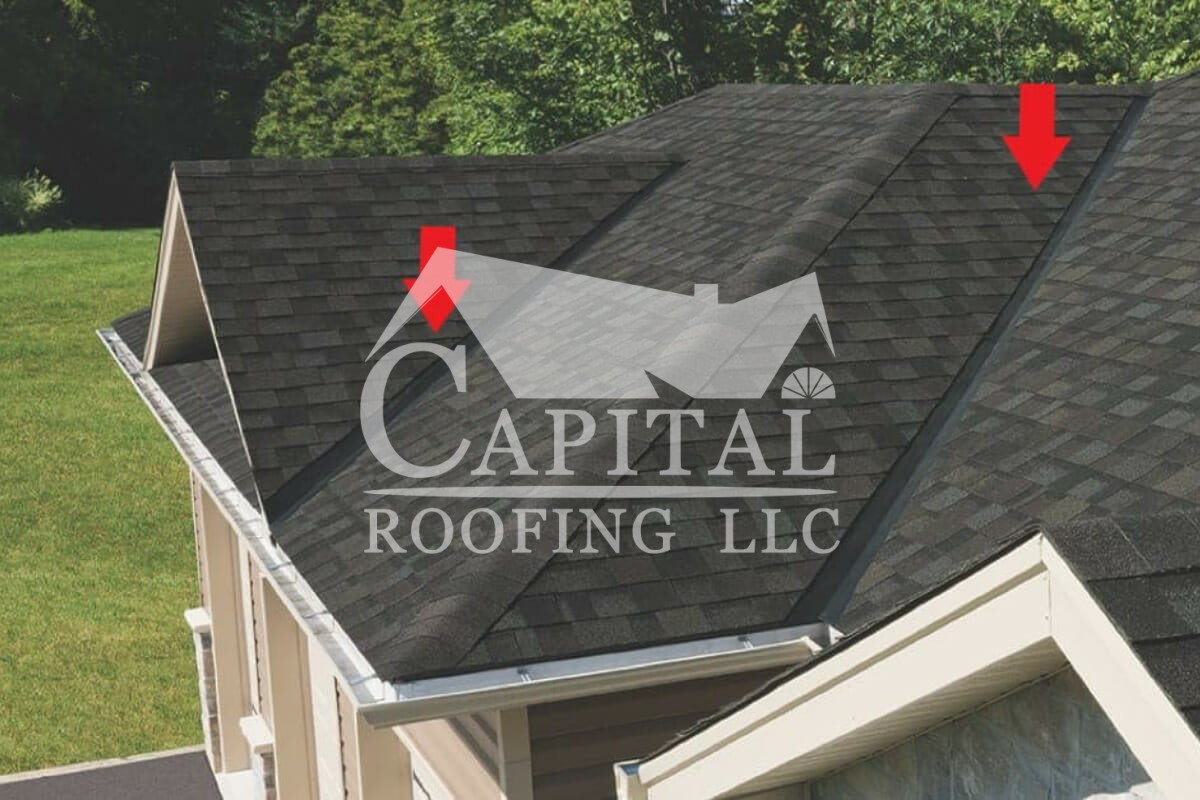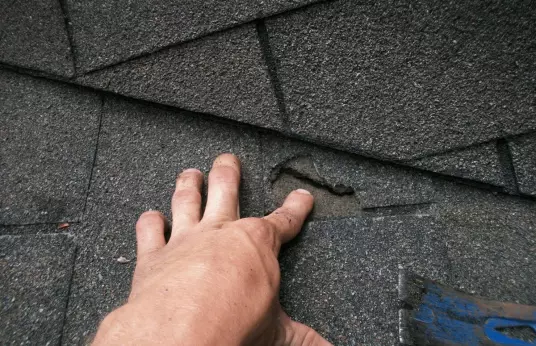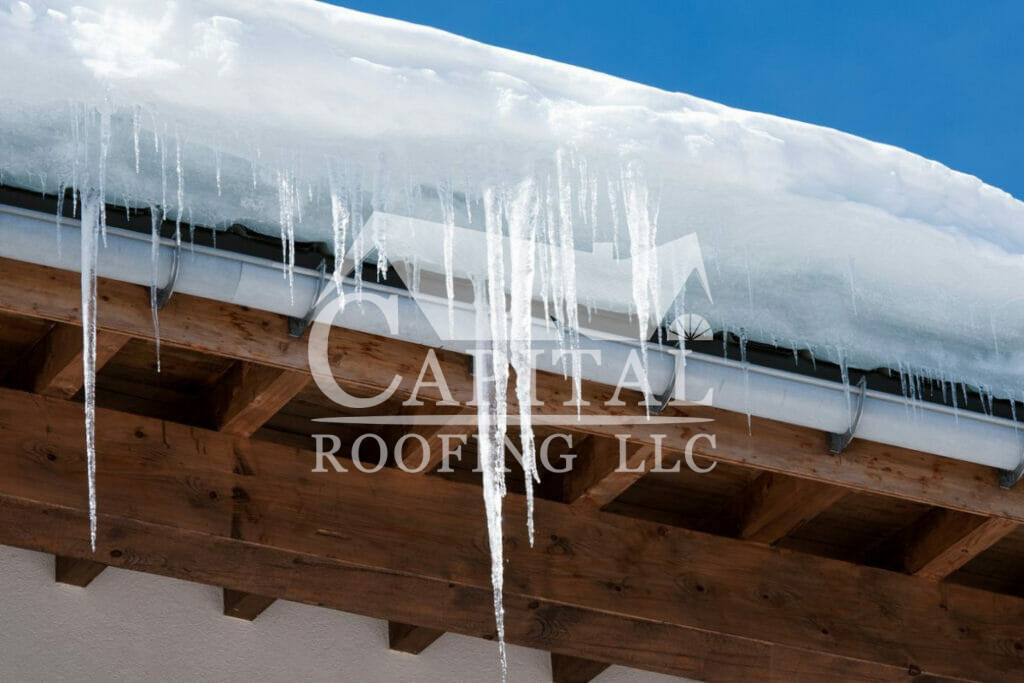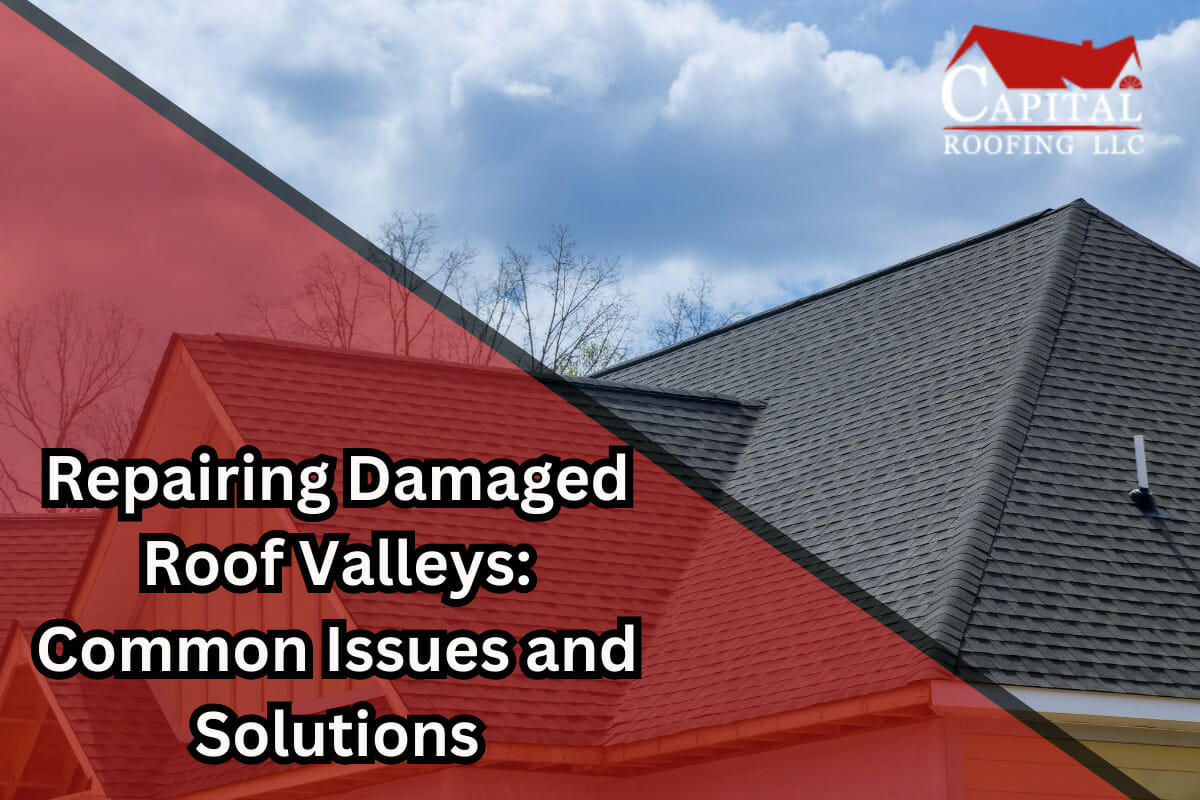If you’re a homeowner, you understand the importance of a solid, leak-free roof. As homeowners are focusing more on aesthetics, roofs are becoming more complex and intricate with added features. Though they look beautiful, they can be more difficult to maintain.
One crucial, but often overlooked component of your roof is the valley. Roof valleys are the channels developed when two roof slopes meet, and they play a critical role in directing rainwater and debris away from your home. When these valleys become damaged, it can lead to serious issues. In this comprehensive guide, we’ll delve into the common problems associated with damaged roof valleys and provide you with practical solutions to keep your roof in top shape.
What Is A Roof Valley?
Before we dive into the problems and solutions, let’s understand the significance of roof valleys. These V-shaped channels serve as a part of the drainage system for your roof.
Though roof valleys serve aesthetic purposes, they also channel rainwater, melting snow, and debris away from your roof’s surface and down to the gutters, preventing water from seeping into your home. Roof valleys also play a crucial role in maintaining the structural integrity of your roof by preventing excess weight buildup and protecting against potential leaks.

Common Problems With The Roof Valley
Now, let us move on to potential problems. Before you can start any repairs, it’s essential that you know how the valley on your roof can get damaged.
Leaks
It’s every homeowner’s nightmare. Roof leaks are the most common, and also one of the most dangerous, roof problems, and roof valleys are often where leaks originate.
The water seeping through damaged roof valleys can cause serious harm, leading to unsightly and costly consequences:
- Your ceilings and walls may have stains and structural damage, diminishing the aesthetic appeal and structural integrity of your home.
- The damp environment created by these leaks can be a breeding ground for mold and mildew, posing health risks to your family.
Swiftly addressing compromised roof valleys is crucial to safeguarding your home’s well-being.

How Roof Underlayment Can Lead to Roof Valley Leaks
One of the major reasons you may witness roof leaks near the roof valley is due to the roofing underlayment. The underlayment goes just under the roofing material, such as asphalt shingles or metal panels.
When the roof underlayment deteriorates or is improperly installed, it can allow water to seep through. Any damage or degradation to the underlayment can create a vulnerable entry point for rainwater, which then finds its way into your home.
Choosing a high-quality, waterproof roof underlayment and ensuring it is properly installed, can significantly reduce the risk of leaks.
Cross-Washing Roof Valleys
When the water falls on the roof, it is supposed to go down the roof valley, ultimately falling into the gutters. But cross-washing occurs when water from one side of the valley crosses over to the other side instead of going down the intended path. This happens when there is a large volume of water flowing down the roof.
This can occur when there are issues with the valley’s design, installation, or maintenance. Cross-washing can lead to water infiltration, leaks, and other roof problems.
To address cross-washing on a roof valley, it’s important to ensure the valley is correctly constructed and sloped to allow water to flow in the intended direction.
Thermal Expansion
Another issue you might encounter is thermal expansion. Throughout the day and seasons, the temperature of your roof can change significantly. When the sun heats the roof, the underlayment can absorb heat and expand. Conversely, during cooler nights, it contracts as it cools down.
While the issues we talked about before are common on shingle roofs, expansion, and contraction are more common along metal roof valleys.
When the underlayment beneath the roofing materials expands, it can cause the metal panels to show signs of damage such as warping, which can cause valley leaks.
Also Read: Do Metal Roofs Leak More Than Shingles?
Ice Dam Formation
In colder climates, the problems associated with damaged roof valleys extend to the formation of ice dams, which can exacerbate the risk of water infiltration and cause additional damage to your roof and home.

How To Repair A Damaged Or Leaking Roof Valley
We have discussed roof valley problems, but now it’s time for some solutions. Repairing a leaking roof is an expert’s job, best left to roofing contractors. However, if you have roofing experience or want to repair the valley yourself, here are the steps to follow.
Materials You’ll Need:
- Safety gear
- Ladder
- Roofing cement or sealant
- Replacement shingles (if damaged)
- Hammer and roofing nails
- Pry bar
- Metal flashing (if required)

Step 1: Safety First
Always prioritize safety when working on your roof. Wear appropriate safety gear, including safety glasses, gloves, and non-slip shoes. Ensure your ladder is stable and correctly positioned.
Step 2: Access the Roof
Climb onto the roof using a secure ladder and make your way to the damaged roof valley. Exercise caution, and if you’re uncomfortable working at heights, consider hiring a professional roofer.
Step 3: Inspect the Damage
Carefully examine the roof valley for any visible damage, including cracked or missing shingles, gaps, or deteriorated sealant. Identify the areas that require repair.
Step 4: Replace Damaged Shingles
If you find damaged or missing shingles along the valley, carefully remove them using a pry bar. Be cautious not to damage any shingles next to it. Replace the damaged shingles with new ones of the same type and color, and nail them securely in place using roofing nails.
Step 5: Seal Gaps and Cracks
Inspect the valley for any gaps or cracks in the roofing materials. Apply roofing cement or sealant to fill these gaps and ensure a watertight seal. Use a putty knife or a caulking gun to apply the sealant evenly.
Step 6: Flashing Repair or Replacement (If Necessary)
In some cases, the metal flashing that directs water down the valley may be damaged or improperly installed. If the flashing is corroded or damaged, it should be replaced. Secure the new flashing using roofing nails and seal the edges with roofing cement.
Other Steps You Can Take
Making repairs is crucial to ensure the longevity of your roof, but this is not the only solution to your roof valley problems. After you make all the repairs or hire a contractor to do so, ensure that you do the following things too:
Gutter Maintenance
Clean Your Gutters:
Regularly clean your gutters to prevent debris buildup, which can prevent the flow of water from the roof valleys from reaching the gutters. As we have noted, the longer water stays on your roof, the more vulnerable your roofing system becomes to damage, especially the valleys.
Install Gutter Guards:
Consider installing gutter guards to keep leaves and debris out, reducing the risk of clogs. As the name suggests, these guard your gutters against additional damage and help them function effectively.
Ice Dam Prevention
Proper Insulation:
Ensure your attic is well-insulated to prevent heat from escaping and melting snow, which can contribute to ice dam formation.
Attic Ventilation:
Maintain proper attic ventilation to regulate temperature and minimize the risk of ice dams.
Trim Overhanging Branches:
Keep tree branches trimmed to prevent them from damaging your roof during storms. Overhanging branches pose a threat during harsh weather and provide a pathway for pests to access your roof. Regular pruning not only safeguards your roof but enhances its overall health and appearance.
How A Professional Can Help Take Care Of Your Roof Valleys
Taking proactive steps can help you avoid costly roof valley repairs. However, if you notice significant damage, it’s best to call a professional roofing company in Claremore. You can call a reliable roofing company for the following services:
Expert Roof Cleaning:
Engaging a reputable roofing company ensures a thorough and safe roof cleaning. This meticulous type of maintenance not only prevents water buildup but also inhibits the growth of damaging algae and moss.
Annual Roof Inspections:
Professional roofing teams conduct yearly assessments to detect potential issues before they worsen. Their keen eye can identify early signs of valley damage, ensuring prompt and cost-effective repairs. Don’t worry, most companies offer free roof inspections.
Roof Repair and Replacement:
Should the need for repairs or replacements arise, roofing professionals are equipped to handle the task with precision, restoring the integrity of your roofing system.
Best Roofing Services In Claremore
Whether you have a problem with your roof valleys, gutter system, or any other part of your roof, we can take care of it. Capital Roofing, the best team of roofers in Claremore, offers exceptional residential roofing services. From asphalt shingles to wood shakes, we have years of experience installing and maintaining many types of roofs.
Contact us today at (918) 260-4075 to learn more about our company and how we can help you with your roofing needs.

